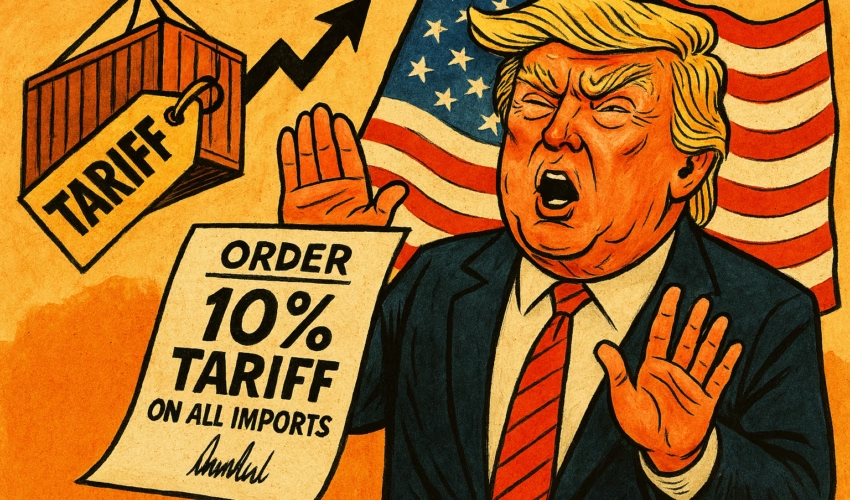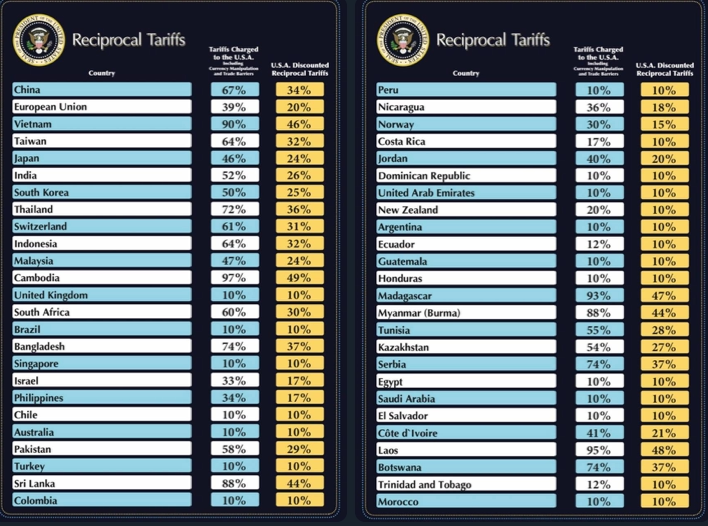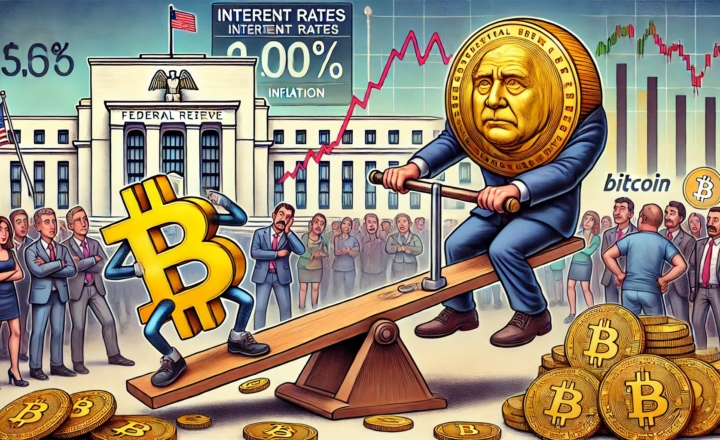A Return to Protectionism as Tariff Doctrine Takes Center Stage
United States President Donald Trump has signed a sweeping executive order implementing a baseline 10% tariff on all imports from all countries, alongside “reciprocal tariffs” targeting trading partners based on the levies they impose on U.S. goods.
In addition, Trump announced a 25% blanket tariff on all automobile imports, part of what he described as a return to historical economic fundamentals.
“From 1789 to 1913, we were a tariff-backed nation. The United States was proportionately the wealthiest it has ever been,” Trump told reporters. “Then, in 1913, for reasons unknown to mankind, they established the income tax.”
The executive order lays out a tariff-matching policy whereby, for example, Chinese goods will face a 34% import duty, as China imposes roughly 67% tariffs on U.S. products.
Trump Revives Plan to Eliminate Income Tax, Replace IRS
Alongside the tariff overhaul, Trump reiterated his campaign-era proposal to abolish the Internal Revenue Service (IRS) and instead fund the federal government entirely through tariff revenues.
Commerce Secretary Howard Lutnick, appointed in February, endorsed the plan, suggesting the creation of an “External Revenue Service” that would tax foreign goods instead of domestic wages.
“Tariffs will protect American workers, strengthen the U.S. economy, and remove the burden from everyday citizens,” Lutnick said.
Accounting firm Dancing Numbers estimates that such a shift could save the average American taxpayer between $135,000 to $325,000 over a lifetime, depending on whether state and municipal wage-based taxes are also repealed.
Implications for the U.S. Economy — and the Crypto Sector
While Trump’s tariff-centric strategy may appeal to certain segments of the electorate and domestic industry, the impact on global trade flows, import costs, and market sentiment is likely to be profound. The move has already sparked concerns among economists about inflationary pressures, retaliatory tariffs, and potential recessionary spillover.
For the cryptocurrency sector, the effects could be both indirect and catalytic:
1. Market Volatility Could Drive Demand for Bitcoin
As traditional markets react to the uncertainty surrounding trade tensions and tax restructuring, Bitcoin and other digital assets may see increased demand as alternative stores of value—especially from investors hedging against monetary instability or inflation.
Already, some crypto traders have pointed to the recent drop in U.S. stock futures and corresponding movements in BTC, which dipped below $82,000 after Trump’s “Liberation Day” tariff rhetoric intensified.
2. Dollar Liquidity and Onshore Crypto Regulation
Replacing income taxes with tariffs may tighten domestic liquidity, particularly for middle-income earners. This could result in lower retail inflows into crypto, even as high-net-worth individuals potentially benefit from tax savings.
At the same time, shifting tax authority away from the IRS may reshape how crypto gains are tracked or taxed, depending on how the government defines its enforcement scope under a tariff-based revenue system.
3. Manufacturing Crypto Hardware in the U.S.
A 25% tariff on all car imports may reflect broader ambitions to reshape the U.S. manufacturing base—a trend that could extend to industries like crypto mining hardware or blockchain data centers.
If tariffs extend to GPUs, ASIC miners, or semiconductors sourced from Asia, the cost structure for U.S.-based miners and infrastructure providers may rise significantly, possibly prompting a shift toward domestic sourcing or modular innovation.
Political and Global Market Reactions
Global markets are already bracing for retaliation. Trade partners such as the European Union, China, and Mexico are expected to respond with their own tariff hikes, further fragmenting global supply chains.
Meanwhile, international observers are raising concerns over U.S. credibility in global trade negotiations, especially as the World Trade Organization and IMF have traditionally warned against broad unilateral trade barriers.
Domestically, the tax-replacement plan is expected to face resistance in Congress, particularly from lawmakers wary of destabilizing the federal budget or undermining public services tied to wage-based tax revenue.
Final Thoughts: Crypto’s Place in a Tariff-Funded Future
While crypto isn’t the direct target of Trump’s tariff doctrine, the implications for macro policy, capital allocation, and regulatory reform are far-reaching.
The shift to a “tariff economy” could:
-
Increase Bitcoin’s appeal as a non-sovereign asset in uncertain macro environments
-
Reconfigure tax enforcement structures, possibly reducing friction for crypto users
-
Create cost pressures for U.S.-based blockchain infrastructure projects
For now, all eyes are on how markets—and Washington—respond to the most radical reshaping of U.S. trade and tax policy in over a century. In the meantime, crypto may once again play its role as a bellwether for economic anxiety and monetary experimentation.













